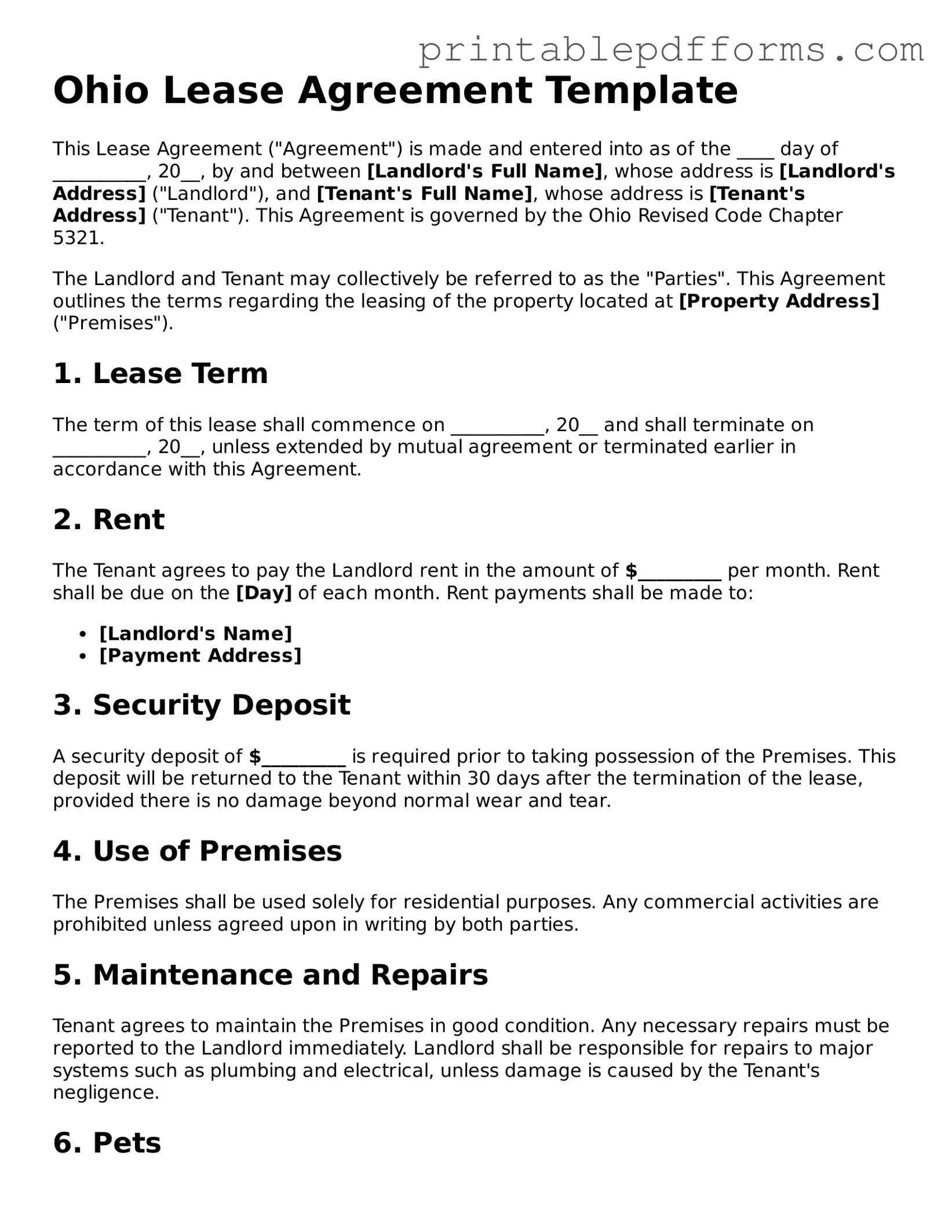Ohio Lease Agreement Template
This Lease Agreement ("Agreement") is made and entered into as of the ____ day of __________, 20__, by and between [Landlord's Full Name], whose address is [Landlord's Address] ("Landlord"), and [Tenant's Full Name], whose address is [Tenant's Address] ("Tenant"). This Agreement is governed by the Ohio Revised Code Chapter 5321.
The Landlord and Tenant may collectively be referred to as the "Parties". This Agreement outlines the terms regarding the leasing of the property located at [Property Address] ("Premises").
1. Lease Term
The term of this lease shall commence on __________, 20__ and shall terminate on __________, 20__, unless extended by mutual agreement or terminated earlier in accordance with this Agreement.
2. Rent
The Tenant agrees to pay the Landlord rent in the amount of $_________ per month. Rent shall be due on the [Day] of each month. Rent payments shall be made to:
- [Landlord's Name]
- [Payment Address]
3. Security Deposit
A security deposit of $_________ is required prior to taking possession of the Premises. This deposit will be returned to the Tenant within 30 days after the termination of the lease, provided there is no damage beyond normal wear and tear.
4. Use of Premises
The Premises shall be used solely for residential purposes. Any commercial activities are prohibited unless agreed upon in writing by both parties.
5. Maintenance and Repairs
Tenant agrees to maintain the Premises in good condition. Any necessary repairs must be reported to the Landlord immediately. Landlord shall be responsible for repairs to major systems such as plumbing and electrical, unless damage is caused by the Tenant's negligence.
6. Pets
[Choose one]
- Pets are not allowed on the Premises.
- Pets are allowed on the Premises with prior written consent from the Landlord.
7. Termination
Either party may terminate this Agreement by providing at least 30 days' written notice to the other party. Upon termination, Tenant agrees to vacate the Premises and return the keys to the Landlord.
8. Governing Law
This Agreement shall be governed by the laws of the State of Ohio.
9. Entire Agreement
This document constitutes the entire Agreement between the Parties. No prior representations, warranties, or agreements, whether oral or written, shall be deemed to exist or bind the Parties.
IN WITNESS WHEREOF, the Parties have executed this Lease Agreement on the date first above written.
Landlord Signature: ________________________ Date: ____________
Tenant Signature: _________________________ Date: ____________
